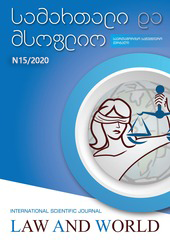Review of Some Aspects of Investment Arbitration under the International Centre for Settlement of Investment Disputes 
##plugins.themes.bootstrap3.article.main##
Abstract
An economic development of the states highly depends upon the flow of private international investment. Whilst the creation of suitable investment climate which would guarantee the fair and equitable treatment of foreign investment within the depoliticized and impartial dispute resolution system had been objective of the World Bank, the International Centre for Settlement of Investment Disputes was established under its auspices. The primary objective of the ICSID Convention has been viewed on facilitating and safeguarding of private international investment through the creation of a favorable investment climate. Arbitration under the ICSID, serves not only in favor of investors but also of host states. Whilst the favorable means are offered to the both parties for dispute resolution according to the major provisions of the Convention, the “execution of the awards”, represent the slight alteration in the disadvantageous position of the foreign investor. The aforementioned alteration as the time consuming process, fulfilled within the state bureaucracy is more sensibly approached by the foreign investors in developing countries, under which the political risk and demand for foreign investment protection is always one of the highest extent. However, by virtue of signing the Convention, the states not only accept the proposed dispute resolution mechanism, but also declare and desire to welcome the foreign investment. As states aforementioned attempts could be related to the creation of the Global Forum for delivering better Investment Climate, the demands of the World Bank in the sphere is one of the most significant importance.






